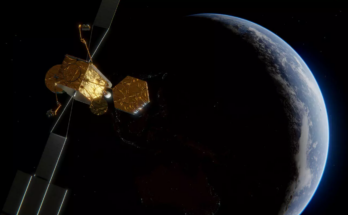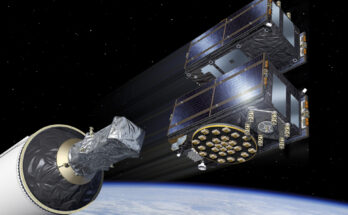
On the evening of August 2, in an otherwise nominal launch, the Antares 230+ lifted off with the Cygnus CRS-19 payload destined for the International Space Station. As unremarkable as the launch was, it did mark the end of an era. The engine used on Antares, the Russian RD-181 (two engines per first stage), will never be used again.
Following the Russian invasion of Ukraine, Russia withdrew technical support for U.S. RD-181 engines along with their deliveries to the United States, in response to U.S. sanctions on Russia. Some RD-181 engines nevertheless remained in the U.S. – enough for two more Antares launches. The 230+ variant has therefore flown for the last time, but the 330 is around the corner.
Northrop Grumman, the prime manufacturer of the Antares, has successfully partnered with Firefly Aerospace to develop a new first stage for the Antares. Slated for an initial launch in 2025, this variant will feature seven Miranda engines, currently under development by Firefly. Overall, these engines will increase the performance of Antares significantly. Whether this might open Antares up for missions beyond supplying the ISS with Cygnus remains to be seen.
With ISS operations now likely extending to 2030, resupply and crew missions have not lost their importance. There will be a gap in Antares launches but not of Cygnus resupply vehicles. Northrop Grumman has contracted with SpaceX for three Cygnus launches on Falcon 9 rockets. Russia also services the ISS with its Progress resupply vehicles and crewed Soyuz vehicles. However, the current geopolitical situation might make it difficult for Russia to provide these services, as Russia’s space assets at Baikonur have been seized by Kazakhstan. Although the status of the situation is unknown at this time, as little is being reported, Russian launches specifically to the ISS will continue, but for how long is unknown. If the situation changes and Russia cannot continue to service the station, the slack will need to be taken up by Cygnus and other servicing vehicles. Therefore, even more Cygnus vehicles than are currently scheduled to be produced might be needed in the future.
Carter Palmer has long held a keen interest in military matters and aviation. As a FI's space systems analyst he is responsible for updating the reports and analyses within the Space Systems Forecast – Launch Vehicles & Manned Platforms and Space Systems Forecast – Satellites & Spacecraft products.




